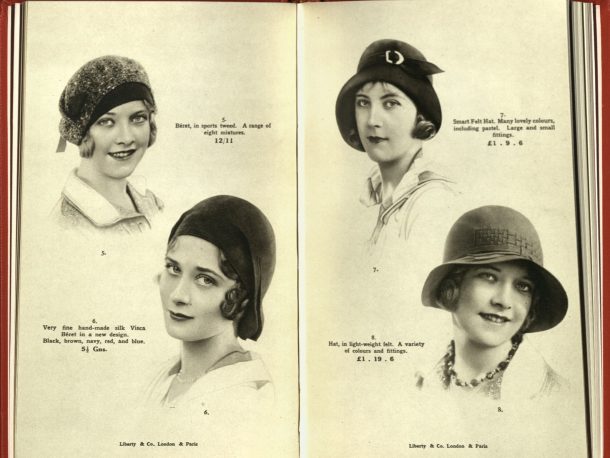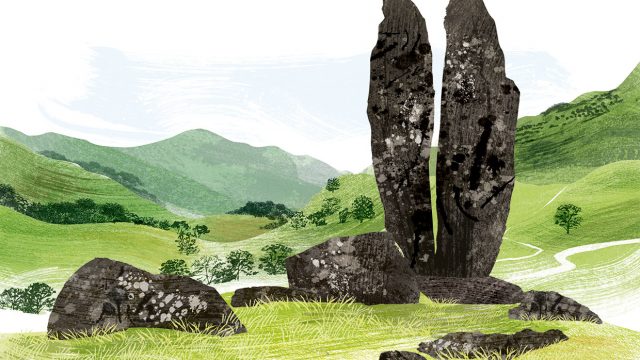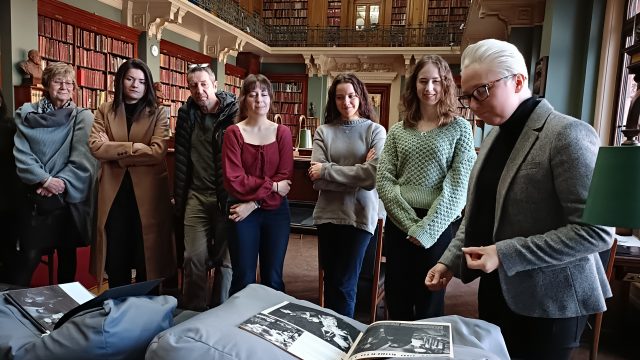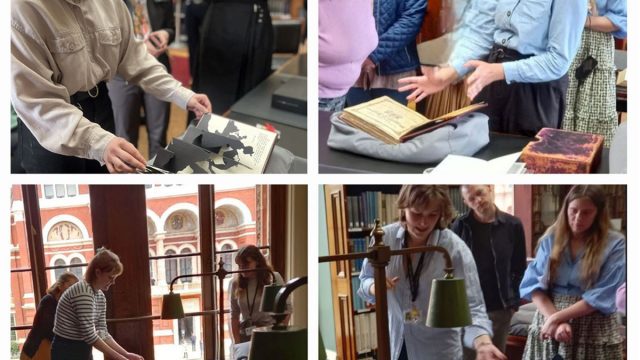As spring draws to a close and we head onwards into the heat of summer, I thought it might be an apt moment to revisit the realm of the printed page one final time in connection with our current “blossoming” season. This time I will concentrate on spring fashions depicted in some early 20th century highlights from the National Art Library’s collections.
Spring has long been associated with the idea of having a clear-out, a spring-clean and also rejuvenating one’s wardrobe ready for the brighter, hotter months ahead. Below we can see a beautiful example of an early 20th century pochoir print on fine quality paper, showcasing the latest couture garment from one of the Parisian fashion houses.

The NAL houses an extensive collection of early Liberty catalogues. Making use of the new 4 colour process printing method of the 1930s, the catalogue shown below showcases a variety of produce often in aspirational interiors. Particularly eye-catching are Liberty’s famous fabrics, including luxurious shawls and throws. Some fashion items are great to see for their novelty value today: for instance a silk motor rug is perhaps not the “must have” accessory it once was!
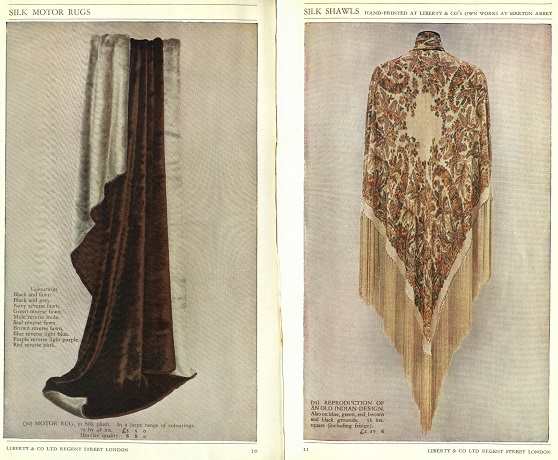
The Easter Parade in New York is of course immortalised by the Irwin Berlin song which features in the 1948 film Easter Parade, starring Fred Astaire and Judy Garland:
In your Easter bonnet, with all the frills upon it,
you’ll be the grandest lady in the Easter Parade.
The parade is a festive walk that, to this day, makes its way down Fifth Avenue from St. Patrick’s Cathedral at Easter time. All manner of materials feature in the hats shown within the slim Liberty’s booklet below, also from spring 1930: velvet, crinolines and straw, to mention but a few. Attention is also drawn to the fact that the hats can be supplied in a variety of fashionable Liberty fabrics.
